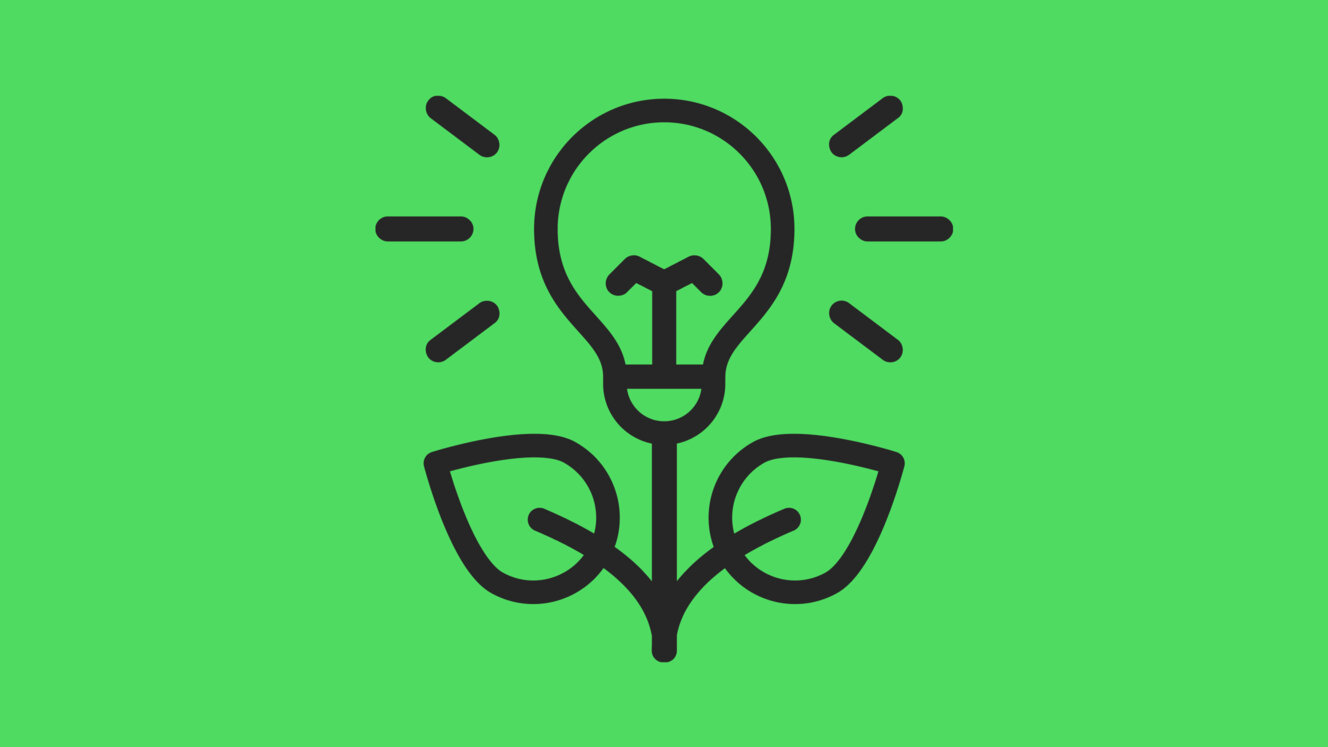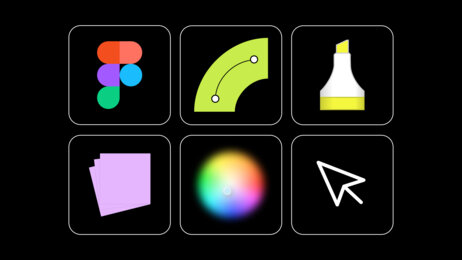
Błażej Lewandowski
-
Aug 02, 2024
-
13 min read
- 01 . The era of digital consumption
- 02 . How does this relate to UX design?
- 03 . More than just CO2 emissions
- 04 . The need to shift from user-centered design
- 05 . What designers can do about it?
- 06 . Flying Bisons towards sustainability
- 07 . How to convince stakeholders?
- 08 . Summary and useful resources
The era of digital consumption
Increasing awareness and debates about our negative impact on the planet help us adopt behaviours and mindsets that positively affect humanity and our environment. Besides the evident negative effects (carbon emissions, plastic waste, and fossil fuel consumption), the impact of our rapidly growing digital consumption is rarely part of the conversation.
Visualising the negative impact of digitalisation can be challenging (even for those of us who work with digital products) because it is less tangible than traffic pollution, for example. For those who work with digital products – our efforts are primarily focused on delivering business value by enhancing user experience, while the environmental footprint of these digital solutions is seldom discussed.
Numbers can only prove that digital activities have a significant physical footprint. In today's consumption-driven world, the environmental impact of our digital habits is becoming increasingly evident. According to the Borderstep Institute's 2020 publication ‘Climate Protection Through Digital Technologies:
The production, use, and disposal of digital technologies contribute to 1.8% to 3.2% of global CO2 emissions, which is more than what aviation produces.This figure is projected to rise to 8% by 2030 and 14% by 2040.
How does this relate to UX design?
— Tony Fry
Everything humans create has been designed in some way, and design strongly affects not only our lives but also the environment. It’s not just about how we build something but also how it is used. Design influences human behaviours and can change how we live, which is equally valid in the digital realm. It's estimated that over 80% of a digital product's emissions are determined during the design and engineering phases. Therefore, it's crucial for designers to consider the environmental impact of their work from the start. By incorporating sustainability considerations early in the design process, we can significantly minimise the negative impact of our digital products.
More than just CO2 emissions
Sustainability extends beyond reducing CO2 emissions. While cutting down on CO2 is essential, sustainable UX design also encompasses broader goals such as equity, accessibility, and responsible consumption, as outlined by the United Nations. Designing with these principles ensures that our products are environmentally friendly and socially responsible.
Note: The UN's Sustainable Development Goals (SDGs) include 17 interlinked global objectives to achieve a better and more sustainable future for all. These goals address various global challenges, including poverty, inequality, climate change, environmental degradation, peace, and justice. We can help create a more equitable and sustainable digital world by integrating these goals into UX design.
The need to shift from user-centered design
Digital products don't function in a vacuum. They are part of a broader system in which users, on whom designers mainly focus, are just one component. We often overlook the wider impact on other actors in the system, and it's not uncommon that they are the ones who pay the price of a good UX. Consider food delivery apps: they enable users to order food conveniently and deliver it to their doors, eliminating the need to go out or spend time preparing meals. However, the people working on deliveries are often hired without basic employment rights, and restaurants must pay a significant percentage of their transactions to these platforms.
As UX designers, we must consider solutions that enhance user convenience without diminishing the broader well-being of all system actors.
We need to shift from a purely user-centred design approach to a more holistic one, which can be called humanity, planet, or environment-centred design.This approach may ensure that the convenience offered to users does not come at an unsustainable cost to others.
What designers can do about it?
You might now wonder: What actions can we take to make the digital industry more sustainable? Below, you’ll find an action plan with easy-to-follow and implement tips. Designers can contribute to sustainability in three areas:
- In Design - How to make the products that we design more sustainable?
- Through Design - How can the products we design contribute to and positively influence more sustainable user decisions and awareness?
- In Daily Work - How can we work more sustainably?
Let’s dive deep into each of them.
Sustainability in design
Digital is physical, and for digital products to function, we need physical objects like servers/data centres, transmission wires, or devices, to name a few. All these objects need access to electricity sources, which consume a lot of energy. According to the HTTP Archive, loading an average webpage generates around 3 grams of CO2. With millions of users, this quickly adds up.
So what can we do:
Optimise Fonts and Colors:
- Use WOFF fonts instead of TTF.
- Prefer dark colours on OLED screens to save energy.
- Minimise font variety and weight to reduce loading times and energy use.
Streamline Images and Videos, which account for about 60% of the CO2 emissions from digital products. So use them wisely:
- Use lower-resolution images
- Avoid autoplay features.
- Choose efficient formats like MPEG4 and WEB3 and efficient plug-ins (avoid YouTube and Google Maps plugins).
Content and Information Architecture:
- Ensure that only necessary content is stored online.
- Delete outdated or unused data to reduce storage needs.
- Consider the lifecycle of content and set expiration dates for data that is no longer relevant or valuable.
- Streamline user journeys to reduce the time users spend completing tasks.
- Focus on clear information architecture to make relevant content easy for users to find.
Green Hosting:
- Choose web hosts powered by renewable energy and located close to your user base to minimise data transfer emissions.
Sustainability through design
- User Education: Enable users to make more sustainable choices, such as switching off unnecessary images and videos. Provide clear information on the environmental impact of their actions and encourage more sustainable behaviours.
- Sustainable Defaults: Set eco-friendly options as the default to encourage more sustainable user behaviour. For example, set video quality to a lower resolution by default or use emission-friendly delivery options.
Sustainability in daily work
- Declutter Digital Workspaces: Regularly delete unnecessary files and reuse design components to minimise waste. Maintain a clean and organised digital workspace to improve efficiency and reduce energy consumption.
- Mindful Communication: Reduce the number of redundant emails and messages, and use video calls judiciously to conserve energy. Encourage team members to communicate concisely and purposefully to avoid unnecessary digital clutter.
- Efficient Resource Use (for geeks ;)): Use digital tools and optimised platforms for energy efficiency. Choose collaboration tools with a smaller environmental footprint and encourage their use across the team.
Flying Bisons towards sustainability
At Flying Bisons, we recognise that there is still room to improve our sustainable practices and integrate them into every project. However, we are on the right path towards more sustainable design. Our website operates on green hosting, and in our products, we limit the use of font variants. We strive to use videos and images consciously, only incorporating them where they add value.
In our daily work, we increasingly rely on design systems that allow our designers to reuse components, extending their life cycle and reducing waste.How to convince stakeholders?
As designers, we usually work for clients who decide how product funds are spent. We’re already advocates of users, but we have a place at the table as clients know that doing good for users is doing good for business. The same goes for advocating for sustainability. It may not yield immediate financial benefits, but it is a crucial long-term investment.
- Consumers are increasingly demanding eco-friendly products and services.
- Regulations are evolving to enforce sustainability. By embracing sustainable practices now, companies can avoid future costs and position themselves as leaders in the green economy. (The same thing happens now with accessibility in the EU - many companies must align with new regulations, and it’s a huge cost as it wasn’t considered in the design and development phase.)
- Some institutions already recognise the risks of greenwashing, and organisations like HSBC incorporate it into their risk matrices.
The shift towards genuine sustainability is not just a trend; it's a fundamental change in how businesses must operate to remain competitive. When presenting sustainability initiatives to stakeholders, highlight the long-term benefits, including compliance with future regulations, enhanced brand reputation, and meeting the growing consumer demand for sustainable products.
Summary and useful resources
Digitalisation is on such a vast scale that now is the time to consider the impact of digital products on sustainability. It’s always better to be late than sorry. Implementing a sustainable approach in the design phase is more effective than repairing solutions when they are well established. It might incur some costs but should be treated as a long-term investment. Try to start small by introducing one aspect of a more sustainable approach at a time. Small changes daily can generate a huge change and impact. By integrating sustainability into every aspect of UX design, we can create products that are innovative, user-friendly, and kind to our planet. The journey to greener design practices starts with awareness and commitment—let's lead the way to a more sustainable digital future.
Useful Resources:
- Gerry McGovern's Blog: Gerry is a guru of digital sustainability, helping organizations become more sustainable, and the author of the book World Wide Waste.
- Sustainable UX Network: A community of UX designers devoted to creating a more sustainable digital world.
- Low-Tech Magazine: A website that is solar-powered and sometimes goes offline.
- Electricity Maps: A map that shows how much CO2 emission is generated due to electricity production (Poland has one of the worst results).
- The Green Web Foundation: Check if a website runs on green energy.
- 01 . The era of digital consumption
- 02 . How does this relate to UX design?
- 03 . More than just CO2 emissions
- 04 . The need to shift from user-centered design
- 05 . What designers can do about it?
- 06 . Flying Bisons towards sustainability
- 07 . How to convince stakeholders?
- 08 . Summary and useful resources



















